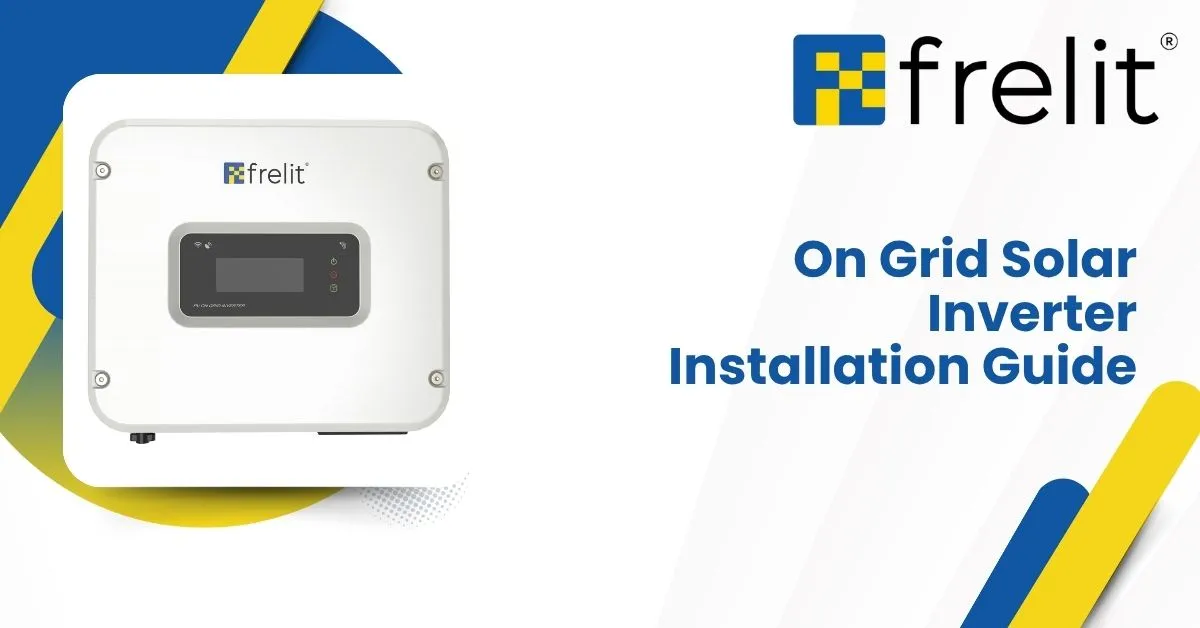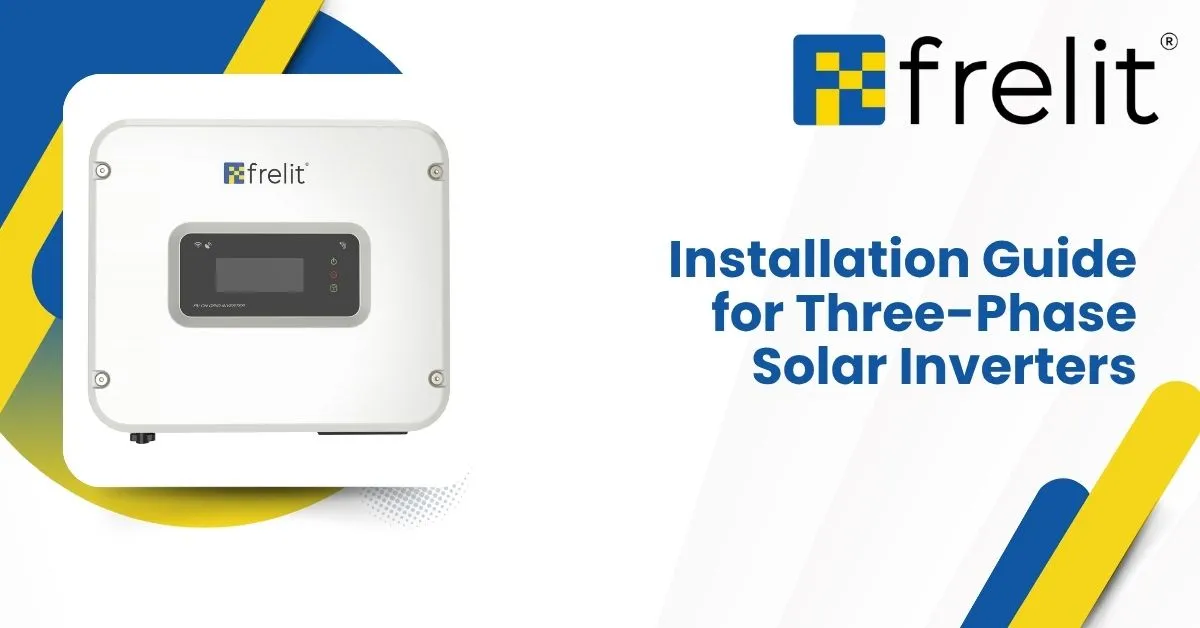
Installing a on grid solar inverter properly is essential for maximizing solar performance, earning net metering credits, and ensuring a long-lasting, safe solar energy system. This guide provides a clear roadmap—from planning to testing—for grid-tied solar inverter installation.
Step 1: Pre-Installation Planning
- Assess your solar system size (kW) and match with inverter capacity.
- Choose the right solar inverter for home installation—single-phase for residences, three-phase for commercial.
- Review local net metering regulations and obtain necessary permissions from your DISCOM.
Step 2: Site Selection for On Grid Inverter
- Mount the inverter in a shaded, well-ventilated area—outdoor but sheltered or indoors.
- Ensure easy access for maintenance and avoid direct sunlight.
Step 3: DC & AC Wiring for Grid-Tied Installation
- Connect solar panel strings to the inverter’s DC input using proper gauge cables and MC4 connectors.
- Run AC output from the inverter to your main distribution panel or a dedicated breaker labeled “SOLAR INVERTER”.
Step 4: Safety First—Earthing & Protection
- Ensure proper earthing per Indian electrical standards.
- Use DC surge protection, AC surge arresters, and dedicated circuit breakers for safety.
- Install anti-islanding protection—most inverters have built-in protection.
Ready to switch to solar? Expert On Grid Solar Inverter installation that maximizes savings and energy efficiency! Contact us today!
Step 5: Grid Synchronization & Net Metering
- Inverter should auto-sync to your grid’s voltage (230 V) and frequency (50 Hz).
- Install a bidirectional net meter to track import/export.
- Coordinate with DISCOM for the final grid interconnection approval.
Step 6: Setup Monitoring for Smart Tracking
- Use your inverter’s mobile app to register the device and monitor real-time performance.
- Look for features like MPPT optimization, performance alerts, and energy reports.
Step 7: Testing & Commissioning
- Double-check all connections.
- Power up AC and DC switches—verify the inverter starts, shows synchronizing, and enters “online” mode.
- Confirm net metering is working and power export is shown correctly.
Step 8: Maintenance and Troubleshooting
- Keep the area around the inverter clean and dust-free.
- Schedule firmware updates and inspect wiring annually.
- Use the app alerts to spot issues early—overheating, grid voltage, or low efficiency.
Why Proper Installation Matters?
- Prevents inverter damage and fire risk
- Boosts system efficiency and energy output
- Unlocks net metering benefits for saving and earning
- Extends the lifespan of your solar investment
Recommended Frelit On Grid Solar Inverters
| Model | Phase | Ideal For |
|---|---|---|
| FRELIT 3 kW On Grid Inverter | Single-Phase | Small homes & apartments |
| FRELIT 5 kW On Grid Inverter | Single-Phase | Medium homes & villas |
| FRELIT 10 kW On Grid Inverter | Three-Phase | Large commercial & factory sites |
All include MPPT, Wi-Fi monitoring, built-in safety, and are optimized for on-grid solar installation in 2025.
Frequently Asked Questions
Q1. What is an on-grid solar inverter?
An on-grid solar inverter is a device that converts solar power into usable electricity and connects it to the public grid. It allows you to export excess energy and benefit from net metering.
Q2. How does an on-grid solar inverter work?
It converts DC electricity from solar panels into AC power and feeds it into the utility grid. If your system produces more energy than needed, the surplus is sent to the grid.
Q3. Is net metering available with on-grid systems?
Yes, most on-grid solar systems support net metering, allowing you to earn credits for the extra energy your system feeds into the grid.
Q4. What size inverter do I need for my home?
The size depends on your energy usage and solar panel capacity. A professional installer like Frelit Energy can help assess and recommend the right size.
Q5. What are the benefits of installing an on-grid solar inverter?
Lower electricity bills, access to net metering, reduced carbon footprint, and a faster return on investment make on-grid inverters an ideal choice.
Q6. How much does an on-grid solar inverter cost in India?
Prices vary based on capacity and brand, typically ranging from ₹15,000 to ₹1,00,000+. Contact Frelit Energy for a personalized quote.
Q7. Who should I contact for reliable solar inverter installation?
Frelit Energy provides professional on-grid solar inverter installations across India with end-to-end support, warranty, and maintenance.
Conclusion
A well-installed on grid solar inverter means higher energy yields, streamlined net metering, and stress-free operation. Follow this solar inverter installation guide closely—or consult a certified technician—to ensure lasting returns and reliable green power.


